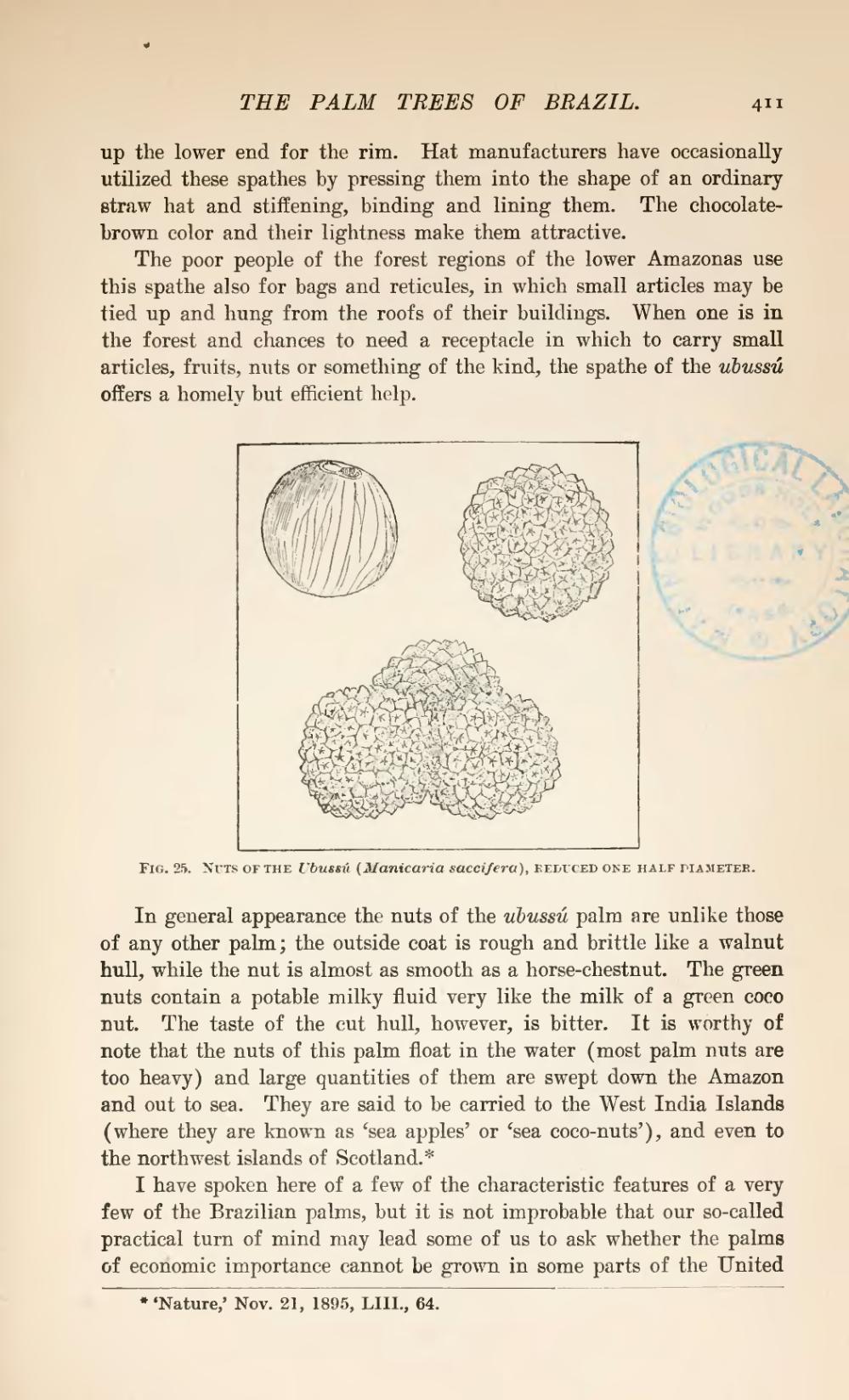up the lower end for the rim. Hat manufacturers have occasionally utilized these spathes by pressing them into the shape of an ordinary straw hat and stiffening, binding and lining them. The chocolate brown color and their lightness make them attractive.
The poor people of the forest regions of the lower Amazonas use this spathe also for bags and reticules, in which small articles may be tied up and hung from the roofs of their buildings. When one is in the forest and chances to need a receptacle in which to carry small articles, fruits, nuts or something of the kind, the spathe of the ubussú offers a homely but efficient help.
In general appearance the nuts of the ubussú palm are unlike those of any other palm; the outside coat is rough and brittle like a walnut hull, while the nut is almost as smooth as a horse-chestnut. The green nuts contain a potable milky fluid very like the milk of a green coco nut. The taste of the cut hull, however, is bitter. It is worthy of note that the nuts of this palm float in the water (most palm nuts are too heavy) and large quantities of them are swept down the Amazon and out to sea. They are said to be carried to the West India Islands (where they are known as 'sea apples' or 'sea coco-nuts'), and even to the northwest islands of Scotland.[1]
I have spoken here of a few of the characteristic features of a very few of the Brazilian palms, but it is not improbable that our so-called practical turn of mind may lead some of us to ask whether the palma of economic importance cannot be grown in some parts of the United
- ↑ 'Nature,' Nov. 21, 1895, LIII., 64.

